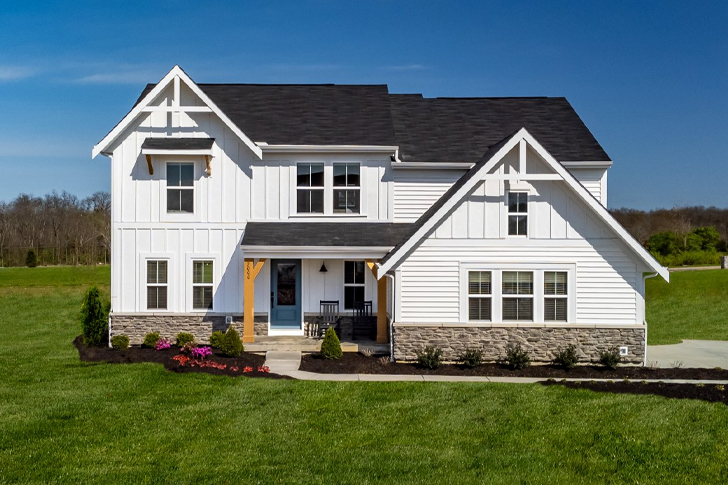Comparative Analysis of Per Square Foot Costs for Custom Homes and Production Builds
When embarking on the journey of homeownership, potential buyers often face a critical decision: should they opt for a custom-designed home tailored to their specifications, or a production build, constructed en masse alongside similar houses? This choice significantly influences the house’s architectural character, personal relevance, and, importantly, the cost. A comparative analysis of the per square foot costs for custom homes versus production builds can provide insightful guidance for homebuyers navigating these waters.

Understanding the Basics: Custom Homes vs. Production Builds
Before diving into the financial differences, it’s essential to define what sets these two housing types apart. Custom homes are designed from scratch, offering buyers the freedom to customize every aspect of the house, from the floor plan to the finishes. In contrast, production homes are constructed based on pre-designed plans with limited customization options, which streamlines the building process and often reduces costs.
Cost Analysis: Breaking Down the Dollars Per Square Foot
In general, the cost per square foot for custom homes is higher than that for production builds. According to industry reports, as of 2023, the average cost per square foot for a custom-built home in the United States can range from $200 to $500. This variance primarily depends on the choice of materials, architectural complexity, and the geographic location of the build.
On the other hand, the production build homes tend to range between $100 and $200 per square foot. The significant cost-saving stems from the economies of scale in material purchases, standardized building processes, and the ability to amortize set-up costs over multiple homes. Furthermore, production home builders typically negotiate bulk deals with suppliers and subcontractors, translating into lower material and labor costs per unit.
The Impact of Location on Cost
Geographic location plays a paramount role in determining the cost of both custom homes and production builds. For example, building a custom home in high-demand urban areas like San Francisco or New York can skyrocket costs well above the average, potentially reaching up to $800 per square foot due to higher land costs and stricter building codes.
Conversely, in more rural or less-developed areas, both custom homes and production builds can be significantly cheaper. Reduced land costs, lower local fees, and decreased labor rates all contribute to these lower expenses. However, it’s important for potential homeowners to consider the hidden costs of building in isolated regions, such as potential difficulties in accessing utilities and infrastructure.
Quality and Customization: What Do You Pay For With a Custom Home?
With custom homes, the higher cost per square foot generally includes not only the physical construction but the luxury of detailed customization. Buyers have a say in almost every aspect of their new home, from the layout to the type of wood used in the flooring. Additionally, hiring architects and designers can add to the cost but results in a completely unique home that ideally fits individual needs and preferences.
The architectural fees, which typically range from 8% to 15% of the total construction cost, and high-end materials can drive up the overall expenses of custom homes. Yet, these homes can also incorporate energy-efficient technologies and designs that, while costly upfront, may lead to savings in utility costs over time.
Economies of Scale: Savings in Production Builds
Production builds benefit significantly from economies of scale. The repetitive nature of designs allows for more predictable and streamlined construction processes, leading to reduced labor costs and waste. Developers might also be constructing several houses simultaneously within a neighborhood, which synergizes the logistics and supply chain management, further cutting down costs.
Resale Value and Market Considerations
While custom homes are typically more expensive to build, they don’t always garner a proportional increase in resale value. The highly personalized choices that may appeal to the original owner could be less desirable to broader markets. In contrast, production homes, often built to target current market trends, might have better liquidity in the housing market.
Moreover, trends and data show that the recovery of the investment in custom homes depends heavily on the economic conditions of the housing market at the time of sale, which adds a layer of financial unpredictability compared to production builds.
Conclusion
Deciding between a custom home and a production build involves balancing personal desires with economic realities. Custom homes offer unparalleled personalization and quality but come at a higher cost and potential risks in market value. Production builds provide a more cost-effective and market-friendly alternative, albeit with limited personalization. Understanding these nuances in per square foot costs can assist buyers in making informed choices that align both with their dreams and their budget.







Recent Comments